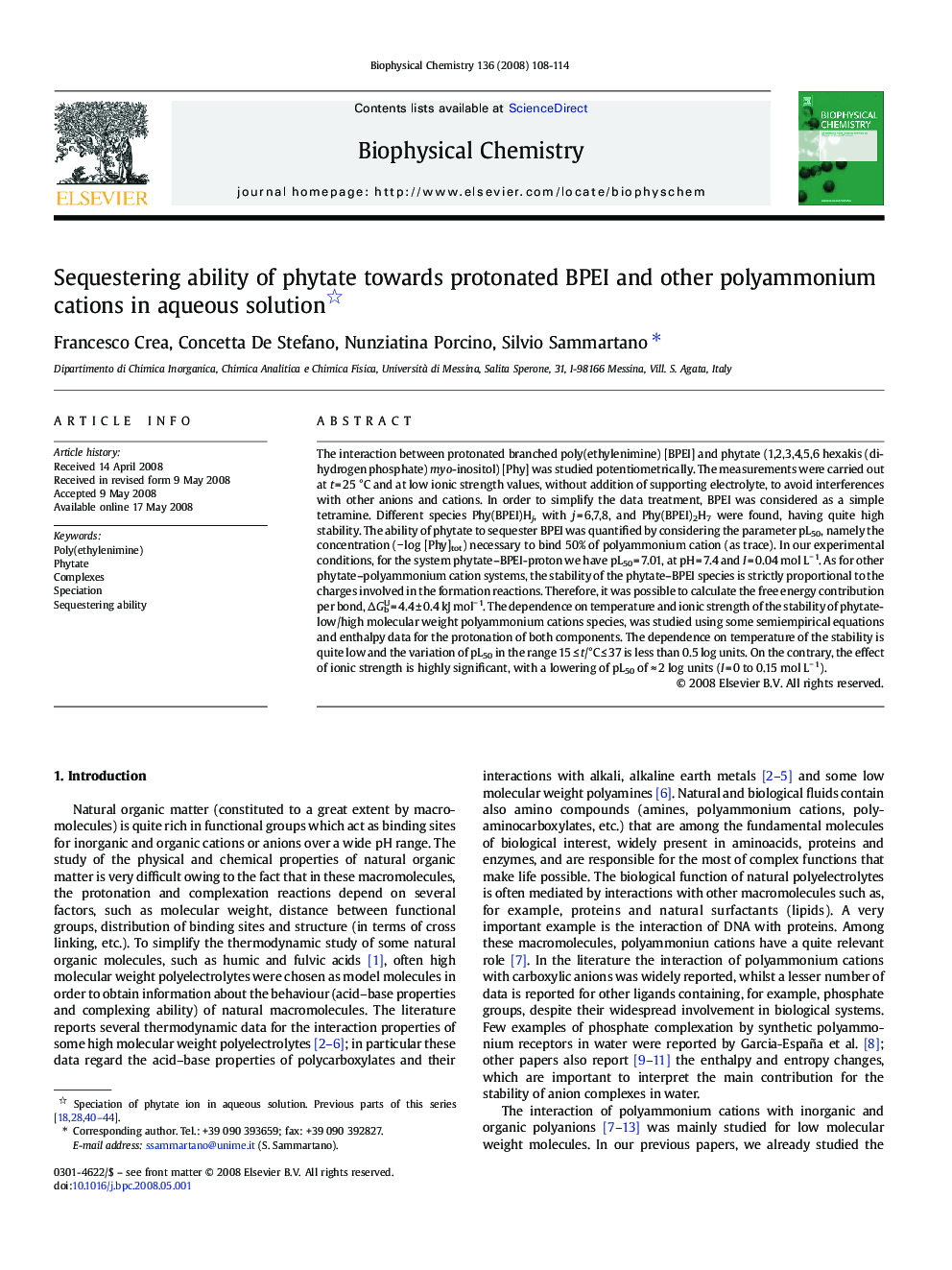| Article ID | Journal | Published Year | Pages | File Type |
|---|---|---|---|---|
| 5371823 | Biophysical Chemistry | 2008 | 7 Pages |
The interaction between protonated branched poly(ethylenimine) [BPEI] and phytate (1,2,3,4,5,6 hexakis (di-hydrogen phosphate) myo-inositol) [Phy] was studied potentiometrically. The measurements were carried out at t = 25 °C and at low ionic strength values, without addition of supporting electrolyte, to avoid interferences with other anions and cations. In order to simplify the data treatment, BPEI was considered as a simple tetramine. Different species Phy(BPEI)Hj, with j = 6,7,8, and Phy(BPEI)2H7 were found, having quite high stability. The ability of phytate to sequester BPEI was quantified by considering the parameter pL50, namely the concentration (â log [Phy]tot) necessary to bind 50% of polyammonium cation (as trace). In our experimental conditions, for the system phytate-BPEI-proton we have pL50 = 7.01, at pH = 7.4 and I = 0.04 mol Lâ 1. As for other phytate-polyammonium cation systems, the stability of the phytate-BPEI species is strictly proportional to the charges involved in the formation reactions. Therefore, it was possible to calculate the free energy contribution per bond, ÎGbU = 4.4 ± 0.4 kJ molâ 1. The dependence on temperature and ionic strength of the stability of phytate-low/high molecular weight polyammonium cations species, was studied using some semiempirical equations and enthalpy data for the protonation of both components. The dependence on temperature of the stability is quite low and the variation of pL50 in the range 15 â¤Â t/°C â¤Â 37 is less than 0.5 log units. On the contrary, the effect of ionic strength is highly significant, with a lowering of pL50 of â 2 log units (I = 0 to 0.15 mol Lâ 1).
